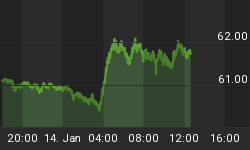Electric vehicle makers have largely relied on aluminum to make their cars lighter in hopes of offsetting the weight of the battery pack and reducing overall weight in order to extend the range—the driving force, if you will, in increasing the attractiveness of EVs for consumers that are thus far underwhelmed with the current EV range.
But now both legacy carmakers and Tesla are looking to expand their customer base beyond niche luxury EVs—such as the mass-market Tesla Model 3. To do this, they must find a way to lower material and manufacturing costs to make more affordable vehicles.
One way carmakers are looking to lower costs is to revert back to heavier material, such as steel. It is heavier than aluminum, but significantly cheaper—more than three times cheaper, in fact.
This renewed push to lower the costs of EVs has set the stage for another industry battle—a battle for market share between steel and aluminum in the automotive industry.
Tesla, for example, is adding more steel in the materials used for manufacturing its Model 3. In its annual report for 2017, Tesla said that the Model S and Model X are built with a lightweight aluminum body and chassis, while the Model 3 design incorporates “a mix of materials to be lightweight and safe while also increasing cost-effectiveness for this mass-market vehicle.”
Related: Gold Investors Shouldn’t Expect A Replay Of 2008
Other mass-market EVs that have more steel include Nissan’s Leaf and Volkswagen’s e-Golf.
A lighter, reinforced steel variety is also back in style for some gas-powered vehicle models, including Fiat Chrysler’s Pacifica van and the latest Audi A8.
Thanks to this shift, steel is now clawing back market share from aluminum, which had been expected to be the biggest beneficiary in the growing EV market.
But all is not lost for aluminum demand. It is still benefits from the cleaner vehicles designs—particularly from hybrids—which are expected to increase in market share until pure battery-powered EVs become mainstream. For hybrids, aluminum is used in the internal combustion engine block and in the transmission, Germany’s auto metals specialist AluMag told Reuters.
Demand for aluminum from hybrids and EVs is expected to rise tenfold by 2030, to almost 10 million tons, CRU consultant Eoin Dinsmore told Reuters.
Undeterred by the aluminum demand on the hybrid side, steel makers have developed advanced high-strength steel (AHSS), and the American Iron and Steel Institute said in a recent study that AHSS-intensive vehicles had lower or equivalent life-cycle emissions than aluminum-intensive vehicles for every class of vehicles tested.
This lighter steel is still cheaper than aluminum and could also be a selling point for EV makers that seek to cut raw material costs in their push to offer cheaper mass-market electric cars.
In addition, developments in the powertrain technology that lower complexity and weight also lower the need to use the more expensive but lighter aluminum.
“In their ongoing pursuit of mass marketability, EV players therefore might identify further opportunities in high-level integration of their EV powertrain systems. Doing so could help them capture potential benefits, such as reduced complexity in development, lower material and assembly costs, and weight and energy-efficiency improvement,” McKinsey and automotive benchmarking services provider A2Mac1 said in an analysis this month.
Moreover, battery packs are getting cheaper and more powerful, also potentially reducing the need for EV makers to rely on the lighter aluminum to achieve lighter overall mass to extend range.
“For example, because of advantages in battery-pack advancements, native EVs now appear to switch from lightweight to more cost-efficient material solutions, such as steel elements in the body in white,” McKinsey and A2Mac1 say. Related: Chinese Tech Giant Launches $3B IPO On Nasdaq
At the end of last year, lithium-ion battery packs were selling at an average price of $209 per kilowatt-hour, down 24 percent from a year ago, according to a Bloomberg New Energy Finance (BNEF) survey. The price is expected to more than halve by 2025, to below $100 a kilowatt-hour, BNEF analyst James Frith said.
The $100 per kilowatt-hour is considered “a tipping point in the adoption of EVs.”
In 2017, global sales of EVs were around 1.3 million, just 1 percent of the total passenger vehicle sales, but a massive 57-percent increase compared to 2016 EV sales, McKinsey and A2Mac1 said in their analysis. Established manufacturers have announced launches of more than 100 new battery electric vehicle (BEV) models by 2024. This could potentially raise the share of EVs of total passenger-vehicle sales to 30-35 percent in major markets like China, Europe, and the United States by 2030. Globally, the EVs share could reach 20-25 percent by 2030, according to McKinsey and A2Mac1.
With advances in technology, carmakers will seek lower costs for the mass-market EVs if they are to gain wider acceptance. So the steel-vs-aluminum market share battle in car manufacturing is on again.
By Tsvetana Paraskova for Oilprice.com
More Top Reads From Safehaven.com:

















